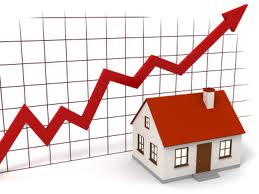 A new report by Lender Processing Services, a national loan performance analytics firm, shows that new foreclosures in the United States during the month of October were filed at rate 22 percent lower than in the previous month. This is certainly great news for the budding recovery of the U.S. housing market, but it could be a temporary situation created by a new requirement.
A new report by Lender Processing Services, a national loan performance analytics firm, shows that new foreclosures in the United States during the month of October were filed at rate 22 percent lower than in the previous month. This is certainly great news for the budding recovery of the U.S. housing market, but it could be a temporary situation created by a new requirement.
One of the numerous provisions mortgage lenders and servicing entities must follow as part of the National Mortgage Foreclosure Settlement Agreement consists of a written notice that must sent to borrowers before starting foreclosure proceedings. This notice makes the process longer by an additional 14 days, and they were sent out for the first time in September.
Now that lenders and servicers are adjusting to the new foreclosure paradigm, the number of new filings could pick up through the end of the year. Mortgage industry analysts are waiting to see the effect of the new Homeowners Bill of Rights in California, due to take effect on January 1st, 2003. This new legislative measure is designed to keep lenders in check when it comes to handling foreclosure proceedings in the Golden State, and it is expected to slow down the process and increase the pipeline of pending foreclosures.
There may be, however, a few positive reasons contributing to the October drop in foreclosures. Homeowners are rushing to get short sales approved in case the Mortgage Debt Relief Act is not extended next year. Also, the pace of mortgage loan modification and principal reduction programs has increased considerably.
Lenders have learned to be more careful in the way they handle foreclosures, which will invariably lead to an overall slowdown in the process. Lender Processing Services provided a reality check in this regard: 5.3 million mortgages in the United States are either awaiting foreclosure or in danger of default. There is also the issue of the shadow inventory of distressed assets that banks are reluctant to roll out at this time.
Further improvement of the housing market has more to do with the foreclosure pipelines and underwater mortgages than with rising home prices and existing home sales. Only when foreclosures are at about 50 percent of their current levels will the industry be able to breathe easy.



